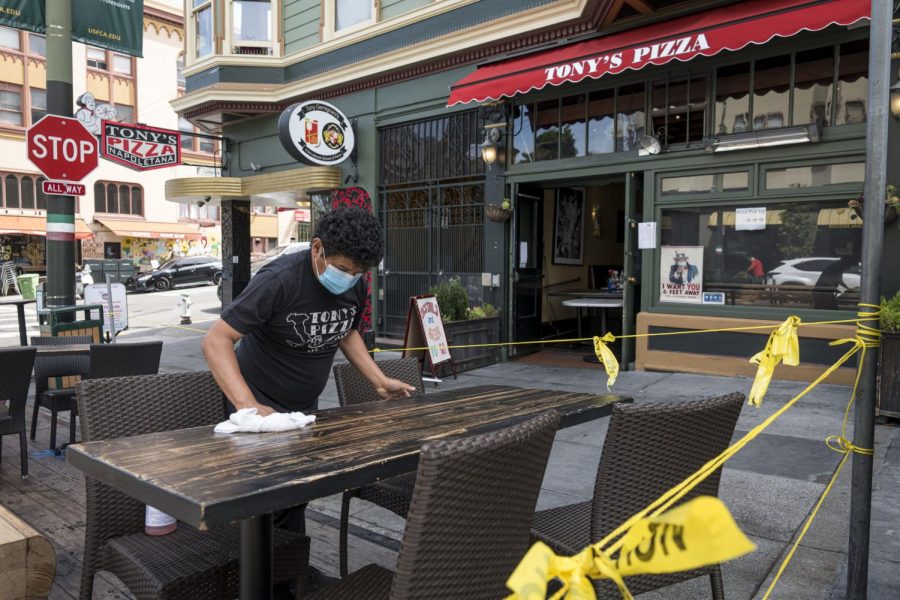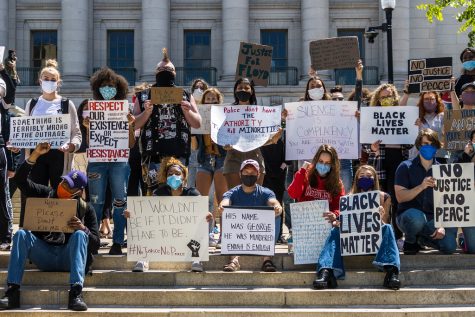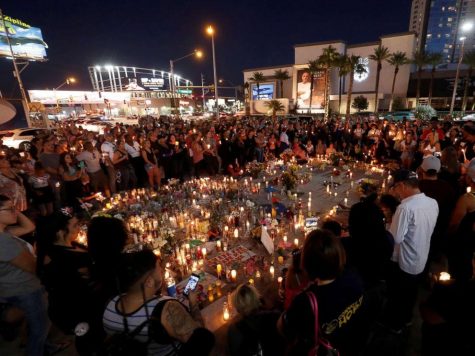Reopening Restaurants Is Not Worth the Risk
July 2, 2020
Montgomery County, Pennsylvania turned “green” on Friday, June 26. To you, this might not mean much; to me, it means that my summer job, a restaurant I’ve worked at since 2016, became a lot more interesting. “Green” allows customers to dine inside the restaurant, which means they are, for the first time, permitted to take off their masks in a public space. After three months of sheltering in place, wearing masks and only allowing takeout, it feels like an alien experience to see others eat inside. Moreover, it feels like a mistake.
The Center for Disease Control (CDC) lists guidelines for restaurants broken into categories based on risk. When Montgomery County was “red,” or fully shut down, we were operating at the “Lowest Risk,” with only take-out options. When the county went “yellow” two weeks prior, we moved to “More Risk” by allowing customers to eat outside. Now that we are “green,” allowing customers to eat inside, we are at “Even More Risk.” The only thing preventing us from having the “Highest Risk” is that our tables are spaced six feet apart. Those six feet are the last line of defense between the restaurant and the coronavirus.
Of course, there are more precautions. Every employee wears a mask at all times. We have a hand sanitizer station by the front door, and we have a box of disposable masks in case a customer doesn’t have one. We have little circles spaced six feet apart on the ground for social distancing. As soon as a dine-in customer leaves the store, we rush to their table with a spray bottle of sanitizer and a clean rag.
We sanitize the hell out of our store, and it never feels like enough.
Maybe it’s because killing 99.9% of all germs is not enough when all it takes to infect someone is a single particle. Maybe it’s because of the studies that show COVID-19 can be transmitted through a restaurant’s air conditioning system. Maybe it’s because of the double standard that allows customers to remove their masks to eat but requires employees to keep them on. Maybe it’s because the curve we worked so hard to flatten is once again rising, with a record number of new cases in the U.S. each day.
In a lull on Sunday, one of my managers voices his concerns. “I’m not comfortable with them eating in here,” he says. “It’s too soon.” He knows what I know: the couple sitting in the corner booth is the third couple to do so today. We’ve wiped the booth down twice already, and we’ll do it a third time once they leave. Every restaurant has a “hot spot,” and every customer who sits there increases the chance that they leave something behind.
Customers who dine in, as a whole, are less concerned about the coronavirus. Once they remove their masks, they stay off. This becomes a problem when they approach the counter, unmasked, to ask for more napkins. It’s also problematic when they linger next to our only cash register after ordering; they are so distracted with their newfound freedom that they forget their responsibility to distance themselves from other customers.
In one of the most accurate descriptions I’ve seen, one bartender points out that customers “seemed like they were just cosplaying four months ago.” People are struggling to enjoy their summer in these crazy times, and going out to lunch is a desperate grasp for normalcy. Unfortunately, their idea of “normal” is not safe to practice right now.
On Tuesday, a few days before turning “green,” one customer thinks I’m looking forward to reopening for dine-in. “I bet you can’t wait,” she says, laughing. I can wait, and I would prefer to wait longer. The idea that restaurant workers are enthusiastic about reopening seems to be a commonly held opinion, and it could not be further from the truth. Working an empty restaurant is not fun, but it’s preferable to the alternative: a packed dining room with no masks in sight.
Perhaps reopening restaurants for dine-in service would be beneficial for the economy. On paper, this might appear true: more people eating out equals more money. More people eating out also equals more tips for servers. However, the economy is explicitly linked to the health of each employee in a restaurant, and it only takes one of us for the store to collapse.
If even one of my coworkers gets the coronavirus, the entire restaurant will shut down for at least two weeks. Servers would be sent home, their tips once again forgotten. This means my health is not only tied to my own income, but to the livelihood of everyone else I work with. As for the restaurant’s economic well-being, a full shutdown would cost thousands of dollars from lost revenue and expired food.
While my experience is limited to the suburbs of Pennsylvania, the risks of reopening are concerns to be considered everywhere. As the U.S.’s daily case numbers surge upward again, it is absurd to proceed reopening stores and restaurants. It’s unsafe for customers and employees alike. Governors need to take action and postpone reopening their states’ restaurants. The lower risk options promoted by the CDC offer reasonable alternatives. As long as the weather is nice, eating outside is a better option. The push for dining inside is motivated by those who want to move on from the coronavirus, but the coronavirus has not yet moved on from us.
I understand the desire for normalcy; I feel it myself. I look forward to the day where my best friend and I can go out to a Mexican restaurant, order enchiladas and chat inside the restaurant for the next three hours. But today is not that day, and pretending that it is poses huge risks to you, other customers and employees. When we get to that day, it will be glorious. Until then, please don’t go.
Erica Weidner, FCRH ’22, is an English and political science major from Phoenixville, Penn.











If you want a picture to show with your comment, go get a gravatar.